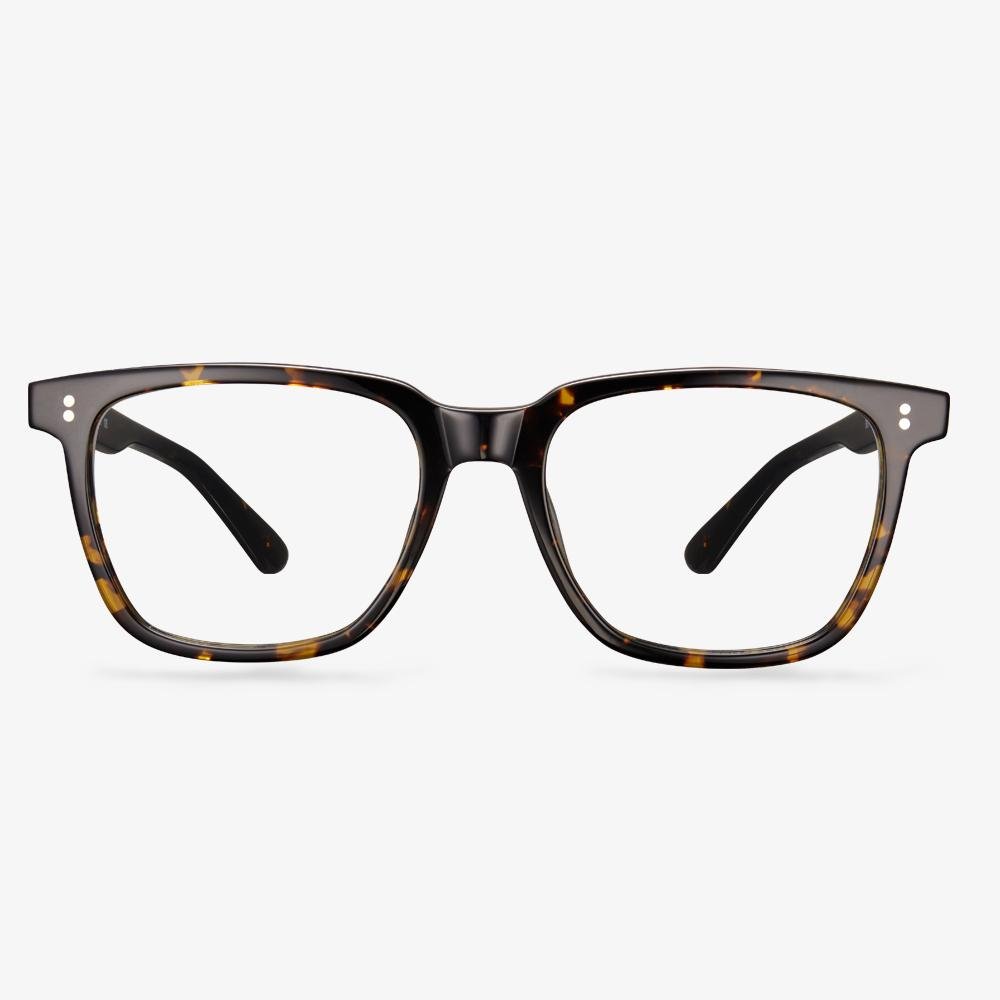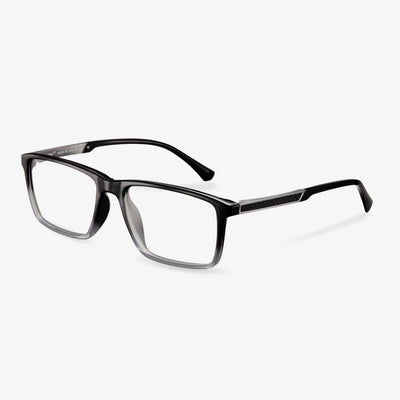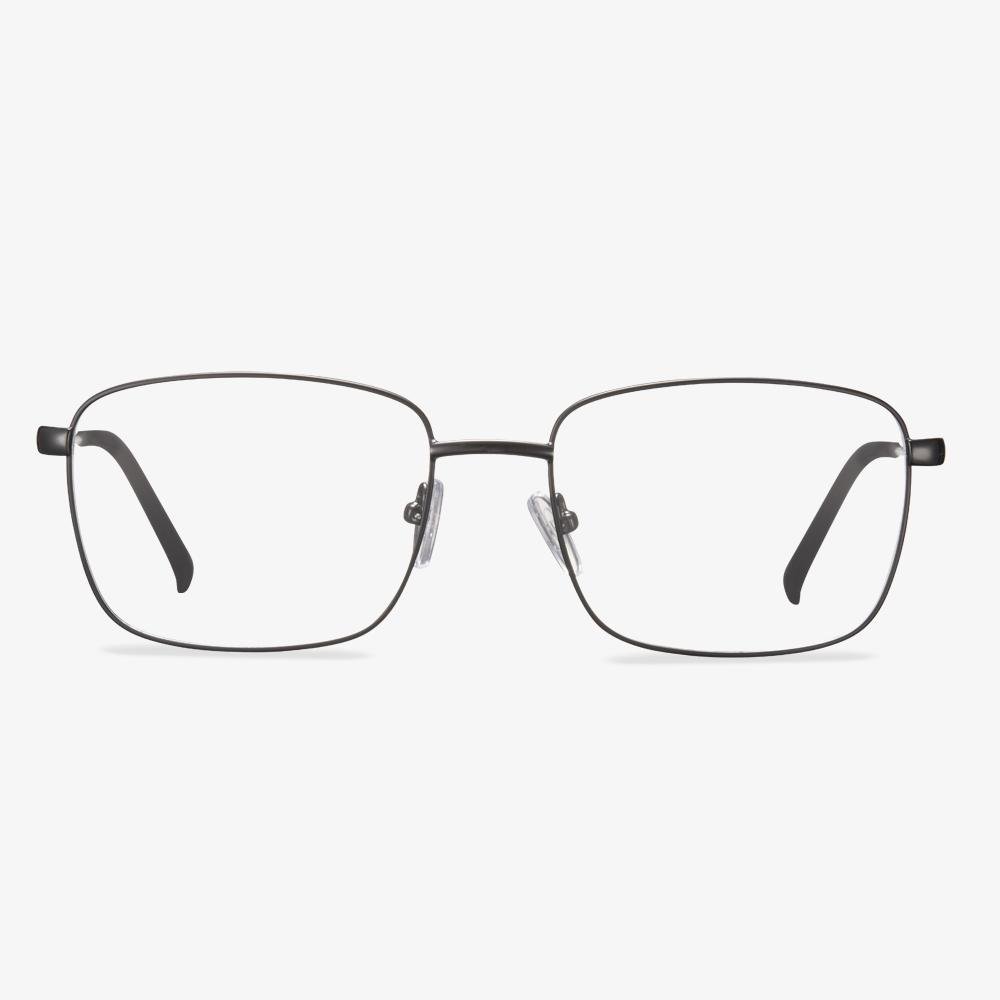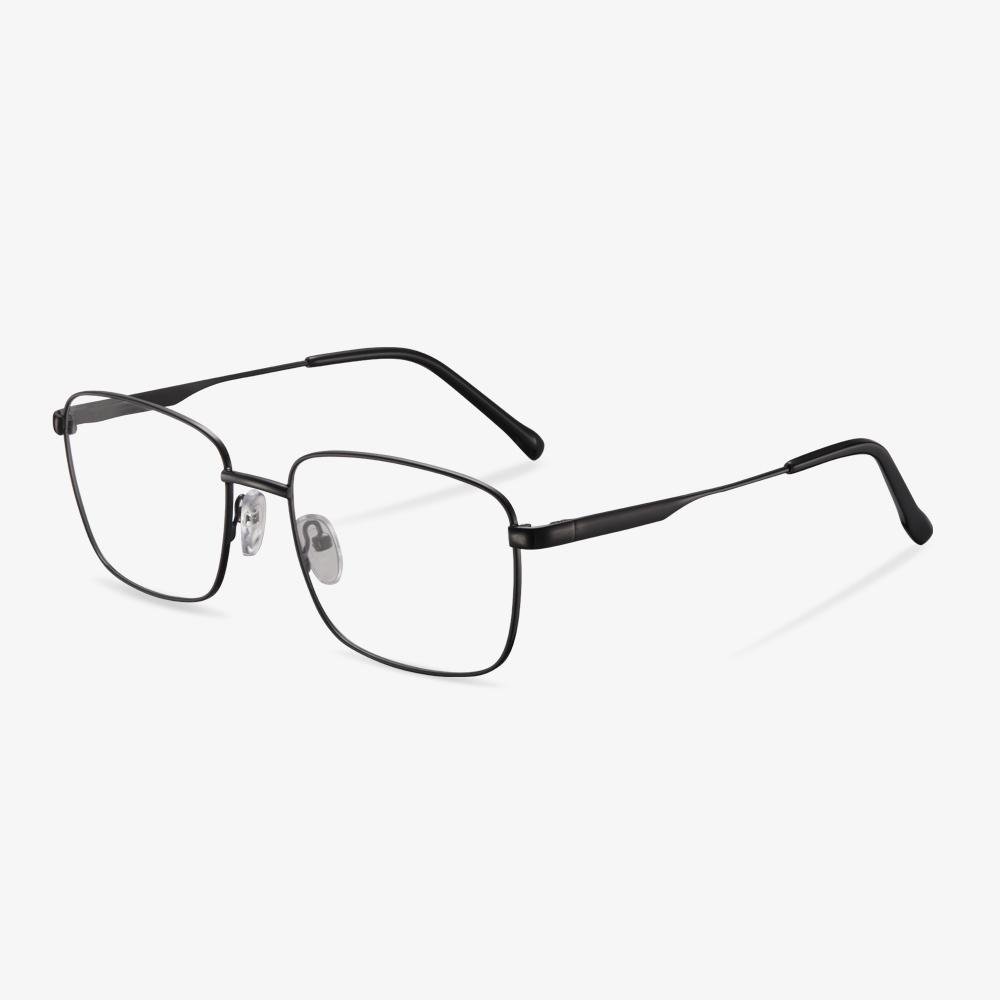The birth of progressive lenses
In 1907, British optometrist Owen Aves first proposed the concept of progressive lenses and got the first patent of progressive lenses. In 1910, Henry Orford Gowlland designed and made a similar lens in Canada, but technical limitations prevented it from succeeding. In 1959, Bernard Maitenaz, a French optical and mechanical engineer, developed the first progressive lens, which was successfully put into the commercial market for the first time and became a milestone in the history of world optometry. With the development of science and technology, the design of progressive lenses has been greatly developed.
How to Test Blue Light Glasses (Amber and Red Lenses)
This section will show you how to test blue light glasses with amber or red lenses.
1. The Black and Blue Squares Test
1. Prepare black and blue paper.
2. Wear your blue light glasses after sunset and check whether both paper appear black.
3. If they do not appear black, your blue light glasses can’t block all blue light.
2. RGB Color Chart Test
1. Prepare an RGB color chart as follows.
2. Wear your blue light block glasses and look at the chart.
3. After wearing blue light blocking glasses, if the B section becomes black and the G section becomes darken, it shows that your blue light glasses block blue light and some filter some green light.
4. The less bright the green circle with your blue light glasses, the better they are.

Besides the above ways, you can ask the professional optician to perform a professional blue light glasses test, which would be more reliable. After that, you can know whether your glasses work effectively to block blue light.
What’s more, if you want to purchase a pair of effective blue light blocking glasses, you can try Koalaeye Optical. It is cheap and provides free shipping services.
How to adapt to progressive lenses?
People who are prone to motion sickness or have inner ear diseases may suffer dizziness, nausea, vomiting, and other symptoms due to their inability to tolerate the slight deformation of the visual objects, so they need to pay more attention when wearing them. For people who have not worn reading glasses before, it is not recommended to wear graded multi-focus glasses directly because their eyes will not be able to adapt quickly.
How to Remove Coating from Plastic Glasses?
To remove coating from plastic glasses, you need to prepare some things which are etching cream, cotton buds or a small brush, rubber gloves, protective glasses and microfiber cloth.
Now, we will show you how to remove coating from glasses.
- With a cotton swab, scoop a little bit of etching cream. Carefully apply it to the whole surface of the lens. (both front and back).
- Let it sit for 5 minutes.
- With another cotton swab, do a little scrubbing around the surface of the lens. (both front and back).
- Wash thoroughly with soap and water.
Then repeat the processes if there is any coating left. After all steps are finished, you can successfully remove coating from plastic glasses.
Points To Note When Choosing Frames
Choose a frame with lightweight, good elasticity, and stable structure. The lens frame with poor quality tends to deform in use, which affects the optical properties of the glasses. Pay attention to whether the two sides of the frame are symmetrical and whether it is fixed and safe enough. Pay attention to whether there are scratches on the surface of the frame. Just put on the glasses to feel if it is very tight or very loose, and they must be tight to reach the saturation condition. Pay attention to distinguish the advantages and disadvantages of the coating. The better coating frame has a uniform color, smooth surface, and clear identification. After using the frame with poor coating quality, the frame will soon rust and fall off, affecting the life of the frame, and even causing skin discomfort or allergy.
Westie Dog Eyeglass Holder
The spirit of Westie is captured by this adorable dog frame, which stands about 4.5 inches tall and can be fitted with glasses, sunglasses, and so on. This dog frame is a great choice for children's frames. It uses high-quality resin designed and manufactured in the UK. Each dog spectacle frame is hand-painted and comes in a gift box.
What Is a Prism in Glasses?
Prism is triangular and made of plastic or glasses for the purpose of dispersing light into a spectrum or changing the direction in which light is reflected.
Prism lenses are special lenses that are prescribed by eye doctors and infused into regular lens prescriptions. The prism glasses do not include contain any focusing power, and therefore cannot any refractive errors. So, one of the most common uses for prism glasses is to correct diplopia or double vision. Double vision means someone sees two separate images of a single object. The prism glasses help to align the two images and correct the problem. The prism glasses can be used to improve binocular vision and reduce double vision, headaches, reading difficulties, and so on.











































